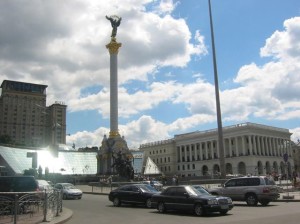The Deutsche Welle (DW) headline for February 12, 2015 states,
“Ukraine peace talks end, ceasefire to begin Sunday”
But the question on many minds is whether this ceasefire will be any different.
The EU and Russian leaders were publicly optimistic. However, as DW stated,
“Thursday’s ceasefire deal was the second agreement after a truce struck in September was largely ignored by both parties.”
Less than a week earlier, French President, François Hollande, and German Chancellor, Angela Merkel, discussed the Ukrainian crisis with Russia’s leader, Vladimir Putin, in Moscow. Then the German chancellor flew to Washington DC to meet with America’s president.
EU and US Differ
According to the Associated Press, America favored supplying arms to Ukraine if fighting continued. This was in response to Ukrainian pleas coupled with allegations that Russia has supplied secessionists in Eastern Ukraine with sophisticated weaponry from day one. Ukraine said that even while the talks were going, Russia transported numerous pieces of military equipment to the other side.
The EU, however, disagreed. On February 7, 2015, The Economist reflected the thinking of Europe’s leaders with its statement,
“If Mr Putin called in the full force of the Russian army, no amount of arms would save Ukraine, as even the most hawkish would admit.”
Likely its leaders also feel that one misstep, by either side, could lead to a much wider war between Russia and Europe and their respective allies.
Sanctions
Europe believes the sanctions imposed on Russia are working and will ultimately lead to Russia’s full cooperation. She counts on an economically strapped Russia realizing it is in that nation’s best interest to see that a lasting diplomatic solution is reached.
It will be interesting to see how all this plays out in the larger scheme of things.
Read the DW February 12, 2015 article here
Read the U.S. News & World Report February 9, 2015 article here
Read related In the News: January 11, 2015 – Russia
